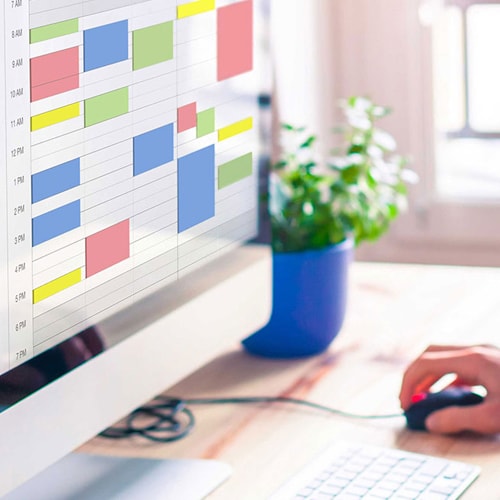As dental offices around the country begin to re-open after COVID-19 closures, dental teams are adjusting to a new way of working with patients and each other. As a dental hygienist, you can collaborate with the dentist you work for to help the dental team navigate safely through this challenging time.
Holding a pre-opening meeting
Prior to re-opening the office, one of the first things you can do is initiate a meeting on behalf of your employer with the entire dental team. Here, you can help to lead an open conversation on topics like PPE supply, screening protocols and scheduling. This should also uncover any concerns, elicit suggestions and help to ensure everyone is on the same page.
Evaluating and monitoring PPE supply and use
Prior to re-opening, offer to take a lead role in establishing whether there is an adequate supply of the personal protective equipment (PPE) that is recommended and required to keep everyone in the office safe. This could include conducting an inventory assessment, identifying stock gaps, and implementing a system for monitoring PPE supplies as the office re-opens. You may find helpful this guidance from the Centers for Disease Control and Prevention (CDC) on PPE in dental settings and optimizing the use of PPE. You can also take the lead on making sure that everyone knows when and how to use the PPE being provided, as well as how to properly don and doff it.
Implementing staff and patient screening
Both the American Dental Association (ADA) and the American Dental Hygienists Association (ADHA) emphasize the importance of frequent staff screening. Offer to take on the task of educating team members on screening and lead the effort on maintaining staff screening and records.
Every team member needs to understand that they should not report to work if they feel sick and/or have symptoms of COVID-19 infection. You could lead the implementation of daily temperature checks and symptom screening for the dental team.
In addition, you could implement the remote screening of patients and visitors prior to visits. You can also ensure that patients and visitors undergo screening, have their temperatures taken, and wear a face mask upon arrival at the dental office.
You can find guidelines and a daily screening log for team members in the ADA’s free interim Return to Work Toolkit.
Adjusting scheduling
Under the current circumstances, patient scheduling will need to be adjusted. Working collaboratively, you can take the lead in discussing and implementing the schedule changes that will be required for the office. For example, adjusting scheduling in a manner that minimizes appointment overlap and reduces the number of patients in the waiting room at any one time, in line with CDC recommendations. You may also request that patients wait in their cars until called in for their appointments.
Appointments will also need to be more spaced out to allow extra time for operatory turnaround. Currently, the CDC is recommending that 15 minutes be allowed for droplets to fall sufficiently after the completion of dental treatment and departure of the patient, before beginning the operatory cleaning and disinfection process. You may consider scheduling particular patients or procedures, like aerosol-generating procedures, at certain times of the day.
Consider that treatment may also take longer, depending on what is being performed. For instance, ultrasonic scaling is currently not recommended, which means that more time would be required for manual instrumentation. Similarly, certain other dental procedures may also be performed using manual rather than mechanical instrumentation or an adjusted combination of the two. If you have an assistant part of the time, your assisted hygiene time should also be booked strategically in the schedule.
All of these considerations will require scheduling adjustments, giving you the opportunity to take the lead and assume responsibility after discussion and agreement with your employer and team members.
Reconsidering product sampling
If you wish to give product samples to your patients, discuss this with your employer and plan how you could do so safely, if at all. For example, you can ensure that samples are stored in a secured cupboard that is not in the operatory, rather than displayed in patient areas or in the reception area. Samples can then be retrieved from the storage area and given to the patient, unopened in a ziplock bag. You should avoid opening products in the dental office to demonstrate them to patients, or to let patients taste them and demonstrate how they would use them.
Help to run a 'soft launch'
It may be helpful to run a “soft launch” prior to the official re-opening to practice enhanced infection control protocols, test out schedules and timings, and highlight changes in your new practice strategies.
Pro-actively monitor the situation
With the COVID-19 situation evolving so rapidly, it is important to stay informed about the latest developments. You can demonstrate leadership by pro-actively monitoring the situation and bringing relevant information to your team meetings. The ADA Coronavirus Center for Dentists and the CDC Interim Guidance for Dental Settings are reliable sources of information.
We are all having to adapt to change, and with collaboration and leadership, you can play a key role in fostering teamwork at this time and helping everyone in the


Was this article helpful?
If you’d like a response, Contact Us.